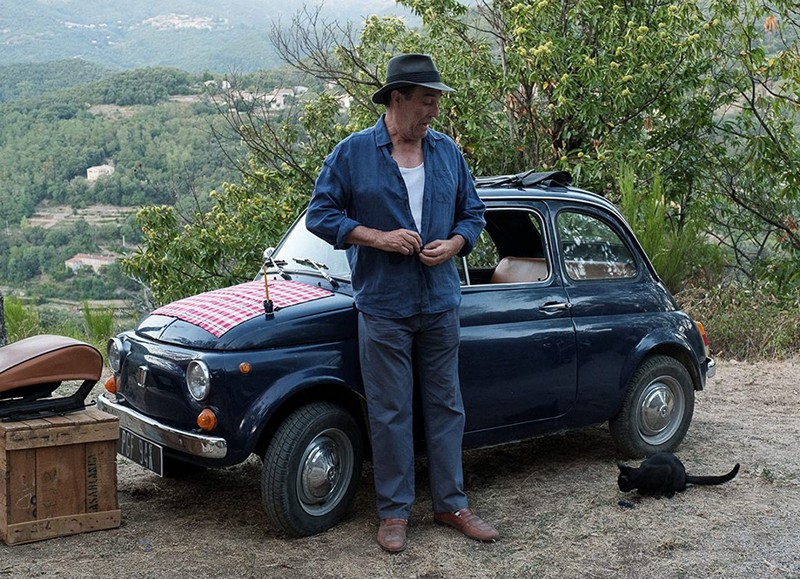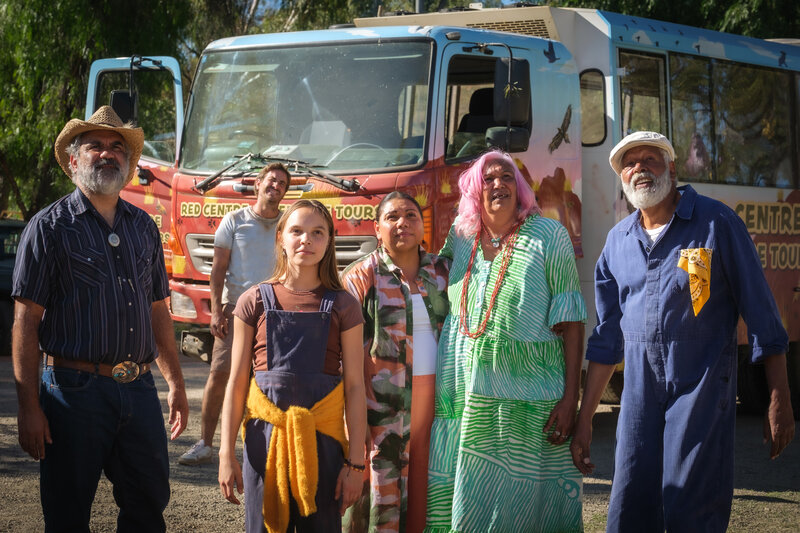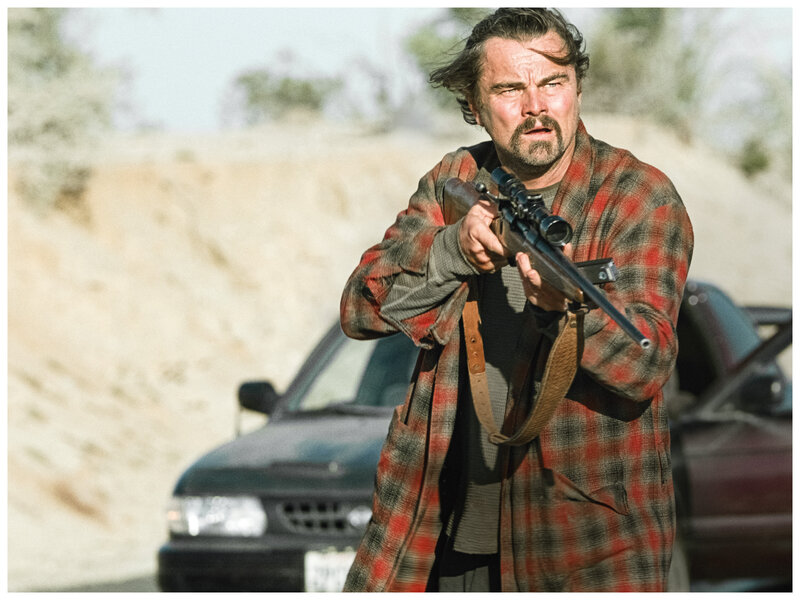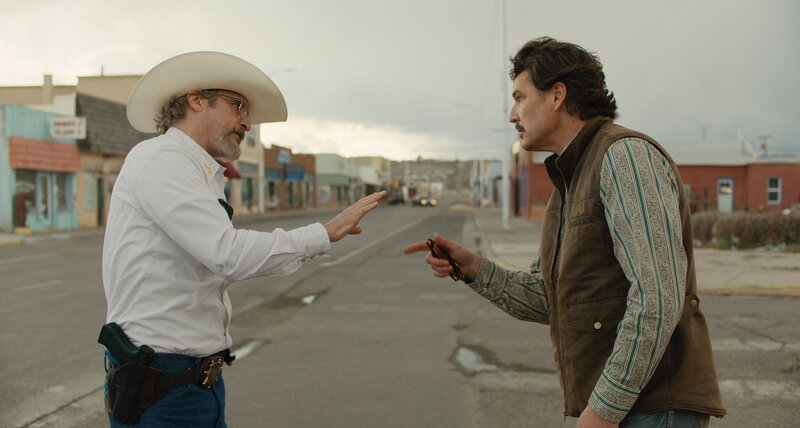The Man in the Hat sounds like something from the pen of Dr Seuss. Rather this is a quirky and offbeat Tati-esque comedy about an unnamed man (played by Irish actor Ciaran Hinds) driving through the French countryside in his little Fiat 500. He drives through backroads and byways and small villages, and interacts with a number of people he meets.

The film opens with the titular character sitting at a small café by the waterfront in Marseilles enjoying a cup of coffee and a meal. Then he sees five strange men drive up in a car and throw what looks like a body wrapped in plastic into the water. He had just been reading a front-page newspaper story about a gangland hit, and, feeling paranoid and panic stricken, he quickly leaves the scene and drives away.
However, on his journey he keeps crossing paths with the five men, which forces him to quickly move on to the next destination in his seemingly unplanned journey. He has some silent encounters with a number of interesting people during his journey, none of whom are given a name. He encounters some of them several times. They include a woman on a bike (Sasha Hails), the damp and forlorn man (Stephen Dillane), a chef (Muna Otaru), a couple of workers who help repair his car after a breakdown, and a couple of traffic wardens (Amit Shah and Zoe Brunear) who keep measuring things as a prelude to sex.
The Man in the Hat is a largely silent film with the story unfolding through pratfalls, the mute performances of the various characters, their expressions and body language. The film has been written and directed by John-Paul Davidson (who has enjoyed a long career in television travel documentaries) and Oscar winning composer Stephen Warbeck (Shakespeare In Love). The pair have a keen eye for human interaction and behaviour which shapes the characters here. The film is largely plotless and lacking any real narrative structure, but unfolds as a series of comic set pieces.
Director Davidson cites Tati’s 1953 classic Monsieur Hulot’s Holiday as a key influence on the film. The unhurried pacing and the whimsical nature of the material slowly work their charms on the audience. Music also plays a key role in the film’s charm, and the music ranges from jazz to folk to an impromptu choral number during a street party while Warbeck’s jaunty score is atmospheric.
Much of the film takes place in France’s picturesque Cevennes area (the setting for the recent Antoinette in the Cevennes), and has been gorgeously shot by cinematographer Kaname Onoyama (Terrence Malick’s Song of Songs).
Hinds wears a bemused expression throughout the film, but he also carries a palpable air of sadness about him. The sight of the large Hinds cramped hunched over in his small Fiat is one of the film’s more enduring comic images. He also carries a photograph of a woman with him, leaving the audience to speculate about her.
Greg King
Other reviews you might enjoy:

Greg King has had a life long love of films. He has been reviewing popular films for over 15 years. Since 1994, he has been the film reviewer for BEAT magazine. His reviews have also appeared in the Herald Sun newspaper, S-Press, Stage Whispers, and a number of other magazines, newspapers and web sites. Greg contributes to The Blurb on film





